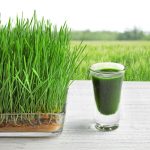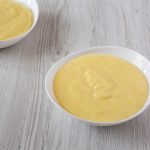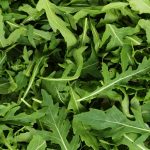
You can never fail to be intrigued by the appearance of star anise. It has those star shaped seed pods containing very often a little seed. The spice is extremely versatile and a key component of Chinese 5-spice. Not only does it offer a wealth of exotic flavour for certain types of Chinese and other oriental dishes but has some intriguing health properties.
One of the main features is its antimicrobial or bacteria killing properties. Don’t mix up with anise which is a different herb altogether.
Where Is Star Anise from ?
A plant called Illicium verum Hook f supplies the seeds of star anise. It is evergreen shrub found in China and Vietnam. The seeds have been used for millennia to flavour foods. In fact it was long known to help reduce the spoilage of meats if the spice was rubbed into the fleshy parts of the joint.
The fruit which provides the seeds is picked just before fully ripening. It is sun dried where it hardens to a dry rind. The seed usually splits to reveal its distinctive orange-rust-red colour and a pungent spiciness is also evident, permeating the places where it is drying.
Most of us would describe star anise as licorice but more sweet. The spice was combined with other spices such as clove, Chinese cinnamon, Sichuan pepper and fennel seeds to create the notorious Chinese 5-Spice mix. It is also a component of some garam masala spice mixes. As well as stews, soups and various broths, a Vietnamese pho would not be worth its flavour without the slightly pungent hit from star anise.
Product developers also use it in puddings and desserts which may seem unexpected but it does have strong enhancing properties. The best way to handle it is to grind up the seed in a pestle and mortar and add small amounts to taste to create the desired impact. Try it with coconut milk or chai tea to create a special flavour. we’ve tried it with chocolate to generate an Asian range of cocoa products which is exciting to say the least – and it works too !
Star Anise essential oil is a flavouring used in cosmetic and personal care products to disguise more pungent and unpleasant bitter actives. You have probably come across it in toothpaste and mouthwash.
Perhaps, one of the most exciting aspects are the medicinal compounds including anethole and shikimic acid. Anethole is also found in fennel which is why many of us associate the flavour with this plant. Numerous other compounds as well as volatiles include the extremely peculiar seco-prezizaane-type sesquiterpenes,as well as phenylpropanoids, lignans, flavonoids and other constituents.
Antioxidants
Antioxidants are powerful compounds in mopping up free radicals which are usually oxygen derived, hence the name. The oils extracted from the seed are particularly potent in a number of tests for antioxidant activity such as linoleic acid peroxidation, β-carotene-linoleate tests and 1, 1-diphenyl-2-picryl hydrazyl (DPPH) analysis (Padmashree et al., 2006).
Antimicrobial Properties
Anethole is a compound which can readily act as an antibacterial so it is a potential extender of shelf-life of mainly meat and savoury dishes. The compound which is a characteristic of Star Anise is effective against not only bacteria, but fungus and yeasts (De et al., 2002).
Chinese medicine
The spice has long been used in Chinese medicine, especially for treating cold, regulating the flow of Qi for pain relief (Wang et al., 2011).
Unfortunately, some suppliers are not scrupulous enough to prevent adulteration with highly toxic seeds from the Japanese star anise (I. anisatum L.) and poisonous star anise (I. lanceolatum A. C. Smith).
This article contains links to our affiliate marketing partner. Please read our affiliate disclosure.
References



Leave a Reply